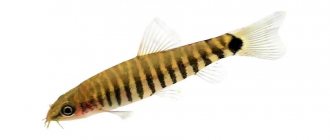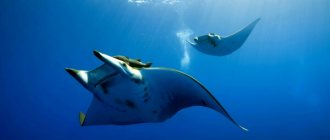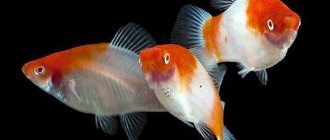Description
The European marsh turtle has an oval or rounded carapace, smooth, usually black or yellow-green in color. It is dotted with many small yellow or white spots, sometimes forming rays or lines. The shell is smooth when wet and shines in the sun, and becomes more matte as it dries. The head is large, slightly pointed, without a beak. The skin on the head is dark, often black, with small spots of yellow or white. The paws are dark, also with light spots on them.
Emys orbicularis has several subspecies that differ in color, size or detail, but most often in habitat. For example, the Sicilian marsh turtle (Emys (orbicularis) trinacris) with a striking yellow-green carapace and the same skin color. And Emys orbicularis orbicularis, which lives in Russia and Ukraine, is almost completely black.
Adult marsh turtles reach a carapace size of up to 35 cm and a weight of up to 1.5 kg. Although, when kept at home, they are usually smaller, despite the fact that the subspecies living in Russia is one of the largest.
The European marsh turtle is very similar to the American marsh turtle (Emydoidea blandingii) in appearance and habits. They were even classified for a long time in the genus Emys. However, further study led to the fact that these two species were divided according to differences in the structure of the internal skeleton.
How long does a marsh turtle live? There is no consensus on the life expectancy of a marsh turtle. But everyone agrees that she is a long-liver. The numbers range from 30-50 years to 100.
General principles of keeping at home
Naturally, a large reptile needs a lot of space. This is why (and for a number of other reasons) keeping representatives of Emys orbicularis is considered relatively difficult, which does not, however, affect the growing popularity of marsh turtles.
To live in captivity, these animals should be provided with an aquaterrarium. This means that the aquarium should have 2 zones - water and land. The capacity of such a “dwelling” should not be less than 100 liters; otherwise the turtle will feel cramped.
The “wet” zone occupies most of the aquaterrarium, and an island of land should be placed in one side of the terrarium. This island can be made from stones, fastening them together with aquarium glue. For safe and easy access of your pet to land, it is recommended to make a flat plastic bridge.
In an aquaterrarium with sandy or pebble soil, it is recommended to plant aquatic plants, the foliage of which will sometimes act as a good nutritional herbal supplement.
Water conditions
- Water level
The aquaterrarium should be maintained at a level of at least 25 cm, as the turtle must be able to swim freely.
- Required water temperature approx. +25°C
Under natural conditions, when the temperature drops, turtles hibernate, but in home aquaterrariums with constant water parameters, this is not observed. A water heater is required if the room temperature is lower than specified.
- Cleanliness is the key to health
Experts especially note the importance of monitoring the cleanliness of the aquatic environment, since the turtle will get sick in dirty water. This question is very relevant: animals not only defecate while floating, but also consume food in water.
It would seem that an effective powerful internal filter can solve the problem of cleaning aqua, but the fact is that in some cases large predatory turtles try to attack this object, perceiving it as a threat.
In this case, water purification should be carried out by replacing it in a volume of at least 50% every 2 days.
However, if baby turtles are released into an aquaterrarium, then during their life and development they are quite capable of getting used to the presence of a working internal filter
HEATING
Natural sunlight is best, and it is advisable to expose baby turtles to direct sunlight during the summer months. However, this is not always possible and an analogue of sunlight must be created artificially. To do this, in an aquaterrarium, above land, an incandescent lamp and a special lamp with UV rays, an ultraviolet lamp for reptiles (10% UVB), are placed.
Moreover, the height must be at least 20 cm so that the animal does not get burned. The temperature on land, under the lamp should be 30-32C, and the length of daylight should be at least 12 hours. In nature, they spend the winter and hibernate, but in captivity they do not do this and there is no need to force them! Her home conditions allow her to be active throughout the year; it’s not winter when there’s nothing to eat.
Land zone
It is needed so that reptiles can rest, warm up and dry out their shells.
The optimal temperature in the area of a land island is considered to be 30–35 degrees above zero, which is achieved by installing an ordinary incandescent lamp over this area.
It should be placed at a height of 25–30 cm from the surface of the land so that the animal does not receive burns. In addition, you should install a small ultraviolet lamp.
The fact is that UV rays promote the production of calcium in the turtle’s body, which is vital for the proper formation of the shell.
Many experts recommend feeding the animal on such an island, gradually accustoming it to this. If you achieve this “land” method of feeding, the water will maintain its purity longer.
Features of nutrition in captivity
The main diet of a predatory turtle consists of protein food.
- You can and should give her pieces of fish (for example, hake, cod or pollock), shrimp, live or dried worms, and mussels.
- Beef liver will also work, but it can be served no more than once a week.
- Plant foods play the role of a vitamin supplement. Chopped and scalded leaves of spinach, lettuce, plantain or dandelion are quite suitable as such an additive.
There are many branded ready-made foods, including Reptomin from Tetra or Nutrafin, produced by Hagen. There are also ready-made balanced vitamin food supplements on sale (from Tetra or Hartz, for example), which are not recommended to be neglected. These additives have a positive effect on the formation of the skeleton and shell of reptiles.
Thus, keeping a marsh turtle cannot be called simple and easy. But all the listed care features and troubles will more than pay off when your pet gets used to you. The animal will trustingly rush to get out of the water in order to get pieces of tasty food from the hands of its owners. As a rule, the turtle gets so used to people that it does not hide its head under its shell, allowing itself to be stroked and even picked up.
APPEAL
Very smart, they quickly understand that their owner is feeding them and will rush to you in the hope of feeding them. However, at this moment they are aggressive and you need to be careful. Like all turtles, they are cunning and can bite, and quite painfully.
You need to handle them carefully and generally touch them less often. It is better not to give it to children, as they pose a mutual danger to each other. It is best to keep her alone! Swamp turtles are aggressive towards each other and even gnaw off their tails. And other aquatic species are either competitors or food for them, this also applies to fish.
Food
Young turtles need to be fed every day, adults 2-3 times a week. The amount of food must be selected personally depending on how much food the turtle eats. As a rule, the volume of food is 2-3 pieces of 1 cm3 for babies, 2-3 pieces of 2-3 cm3 for older individuals. The food must be moist and at room temperature. The main food for turtles is fish. It is preferable to feed only live small fish, which can be instantly released into the aquarium.
Types of feed
Fish (not very fatty and of all kinds - thalassa, cod, hake, gobies, etc.), meat (in particular internal organs: chicken heart, beef liver, beef heart, but not chicken), crustaceans and insects in the form of an infrequent delicacy (bloodworms, daphnia crustaceans, gammarus, earthworms, beetles, woodlice, legless locusts), others (small freshwater snails, squid, tadpoles, shrimp, frogs).
Turtles are required to receive vitamins and mineral supplements in their food. For these purposes, the food is supplemented with calcium-containing crusts and vitamins (Wardley and other companies), or a varied and complete food is given (fish with internal organs and bones). With a precise diet, auxiliary calcination will not be required. In addition, it is preferable to place a mineral neutralizer block in the aquarium.
Since swamp turtles are predators, their thinking abilities are much greater than those of land turtles, and they learn easily and simply. You are allowed to try to teach a turtle to take food from tweezers: they willingly do this by stretching their head out of the water and on the shore. It is also interesting that, having grabbed food outside the water, the turtle goes to swallow it into the reservoir, but still, with this feeding, the water most often remains clean. Soon, when the owner appears, a conditioned reflex will be provoked: the turtles will harmoniously stick their heads out of the water. In addition, they are tamed at certain feeding times and will be able to recognize the owner.
Terrarium
The terrarium must be sufficiently free (120–150 liters, 120 liters is at least for 1 individual), which consists of two halves - water and land, with a ladder between them. It is preferable to have a pond with a depth of up to 10 cm for small specimens, for large ones 15–20 cm. An ultraviolet lamp and an incandescent heating lamp for reptiles (10% UVB) are placed above the dry part of the territory at a height of at least 20 cm.
There must be a water filter and a water heater (a heater, however, is not required if the water temperature does not drop below 24-26 degrees, in fact, this is what it should be). On land, the air temperature in front of the lamp is 30-33 C. Turtle in the cold period of the year in natural conditions goes into hibernation, but at home at a temperature of 22–25 ° C this fact does not happen.
To prevent the water from becoming polluted, the turtle is transplanted into a basin or bathtub and fed there, and then put back into the aquarium.
Sexual behavior
Turtles become sexually mature at approximately 6-8 years old, with a shell length of 10-12 cm. Males dynamically flirt with females, sniff the tail, paws, and stretch their nose to the muzzle. Males are often quite aggressive; they chase females on land, then they sit on top of the females’ shell, tightly grasping the edges of the shell with their paws and begin to hit the female’s head with their nose. Such turtle fun often ends in mating. In females, egg laying occurs in approximately 1-2 months. During pregnancy, females need increased nutrition, which should be enriched with vitamins, protein and calcium. Please pay special attention that calcium is needed 2-3 times more than with normal nutrition. The female stops eating 2-3 months before laying (the main sign of the upcoming laying); until this time, the female needs daily food and a higher temperature (2-3 degrees more) of water and air to absorb and digest the necessary substances. Particular attention must be paid to the ultraviolet lighting regime, without which it is simply impossible to absorb calcium and synthesize vitamin D3. During pregnancy, it is preferable for the female to be kept separately from the male.
Reproduction
Under natural conditions, female turtles lay about 5-12 eggs between May and July. During this time, the female lays 1-3 clutches (usually in May, June and July). The eggs of swamp turtles are oval, covered with a hard shell, about 28-33 millimeters long and about 18-20 millimeters wide, weighing about 8 g. Females lay eggs at night in initially dug holes about 10-12 cm deep. Small turtles are about 15 long millimeters hatch after 2-3 months between August and October. They spend the first winter in the ground, feeding on the yolk sac located in the abdominal scutes of the plastron. As a rule, they appear from the ground only by next spring, if the air temperature reaches 15-20C.
European marsh turtles kept in captivity have every chance of breeding. A couple of days before laying, the females become restless, try to get out of the aquarium, and often sit on the shore and dig the soil. During this period, you need to worry about creating ideal conditions for masonry. On the shore, it is allowed to place a ditch with wet sphagnum, sand or vermiculite (you can use a mixture of vermiculite and sand), where the turtle could lay eggs. If the coast is small, you can transplant the female into a separate box overnight with a 12-15 centimeter layer of soil. After the eggs have been laid, they must be carefully placed in the incubator without turning them over. Incubation temperature is 28-30C with an optimal moisture level of 80%. The duration of incubation depends on the temperature and is approximately 2-3 months.
Additional information
Scientists identify 13 subspecies of the marsh turtle in nature, but only 5 are found in Russia. In the summer, turtles live near bodies of water and, if an enemy appears, they rush into the water and dive to the bottom, often burying themselves in silt. Swamp turtles hibernate in the fall, in October, thereby waiting out the winter at the bottom of reservoirs.
Adults and large
individuals can at times be hostile and try to bite. It is necessary to take them by the edge of the back of the shell, since the head on the long neck has great physical activity. The bite can be very painful, since, having grabbed the soft part of the hand with its mouth, the turtle convulsively clenches its jaws several times. However, if you treat this animal well, they instantly become tamed, stop hiding their head under their shell, and, on the contrary, pull it towards the owner-breadwinner.
Where to find a river turtle?
The river turtle is not classified as exotic, so it is not always possible to buy it at a pet store. Even if it ended up there by luck, its value cannot be high, since a river turtle, without exaggeration, can be taken from the street. They do not accept fast and clean waters, so they prefer to live in stagnant rivers and swamps. Most often they can be found in the lower reaches of the Don, Volga, Dnieper, and Ural. River turtles love to bask in the sun, so they willingly look for a rock on which to climb out after a short stay in the water. Finding a turtle is not always easy as they hide under rocks and old tree branches. Their color, close to the color of the area in which they live, allows them to remain invisible to humans.
Characteristics of this species
The European marsh turtle is characterized by a brown-brown or dark olive oval shell (carapace) with diverging lines or bright yellow dots, paws with sharp claws (4 claws on the hind legs and 5 on the front) and moderately developed swimming membranes, a long tail . The head and paws are decorated with yellow spots. The plastron is lighter, ranging in color from yellow to dark brown with black.
The color of the shell can change as it grows and forms. Newborn turtles are almost entirely black with a yellow rim along the edges of the plastron and carapace. Turtles lighten with age and become covered with a bright yellow pattern, the plastron also turns yellow, and the carapace changes from brown to dark olive. Depending on the subspecies, the length of the shell reaches 18–25 cm, and males are usually smaller than females. In nature they live up to 120 years.
Reproduction
In the spring comes marriage time. During this period, turtles (age 6–8 years and shell 9–12 cm) are far from water bodies. Turtles can also mate in water. The sperm of turtles can be stored in the female’s tract for up to 1 year or more; as a result, a female caught in the wild can “personally” lay completely full-fledged eggs after 5-6 months. Between May and July, females lay eggs three times in holes dug in the ground. During the season, the female produces 1–3 clutches. The depth of the pits is approximately 10 cm. The eggs that fall into them are beautiful: their shells are snow-white, they themselves have an oblong, regular shape, size 30 x 20 millimeters, weight approximately 8 g. In any clutch there are about 5–10 eggs, and they The female buries it most carefully. After approximately 2-3 months, these eggs produce tiny turtles about 24–25 millimeters long, weighing 5 g, with a large yolk sac on the belly. The shell of young turtles is usually dark brown with yellow lines. They dig small tunnels near the nest, where they spend the winter in most cases. In the spring, turtles crawl out of their shelters onto the surface of the earth and begin an independent life. The incubation temperature is about 25–30°C and the duration is 54–90 days. Incubation humidity 90%. The water depth for newly born turtles is approximately 5 cm. Young individuals feed on daphnia and insect larvae.











